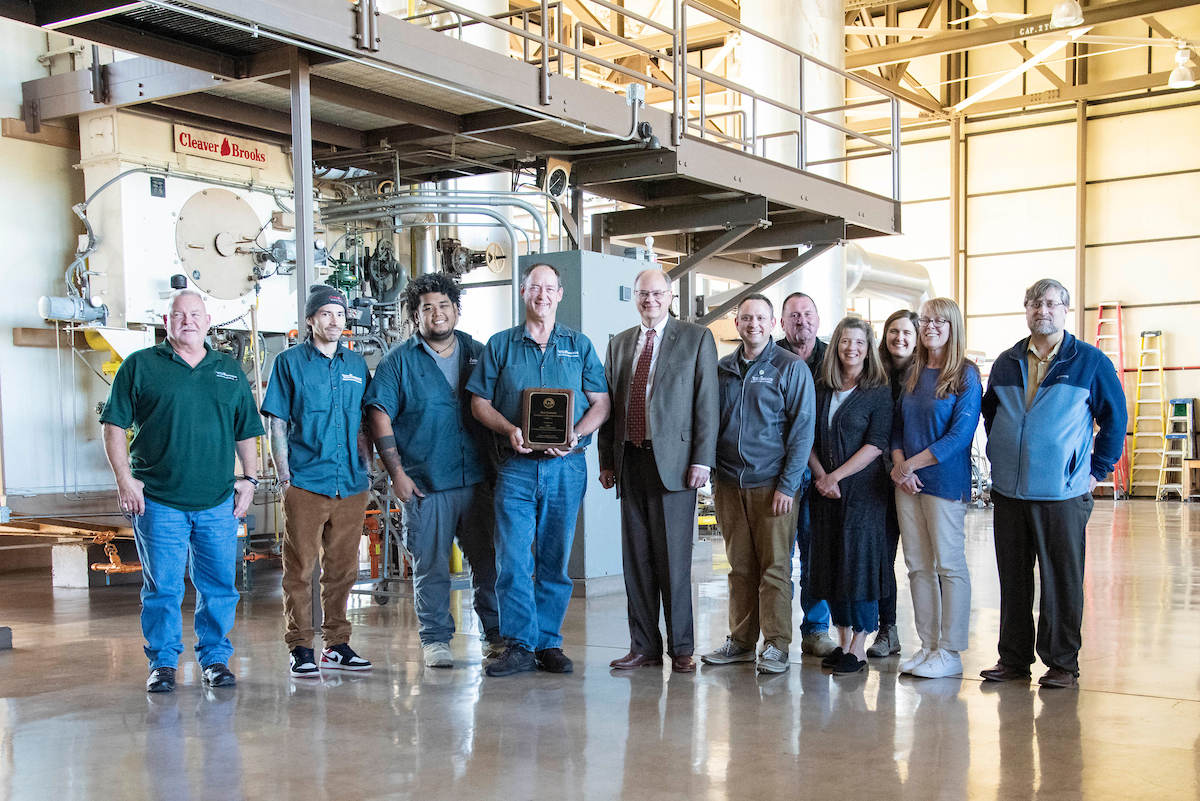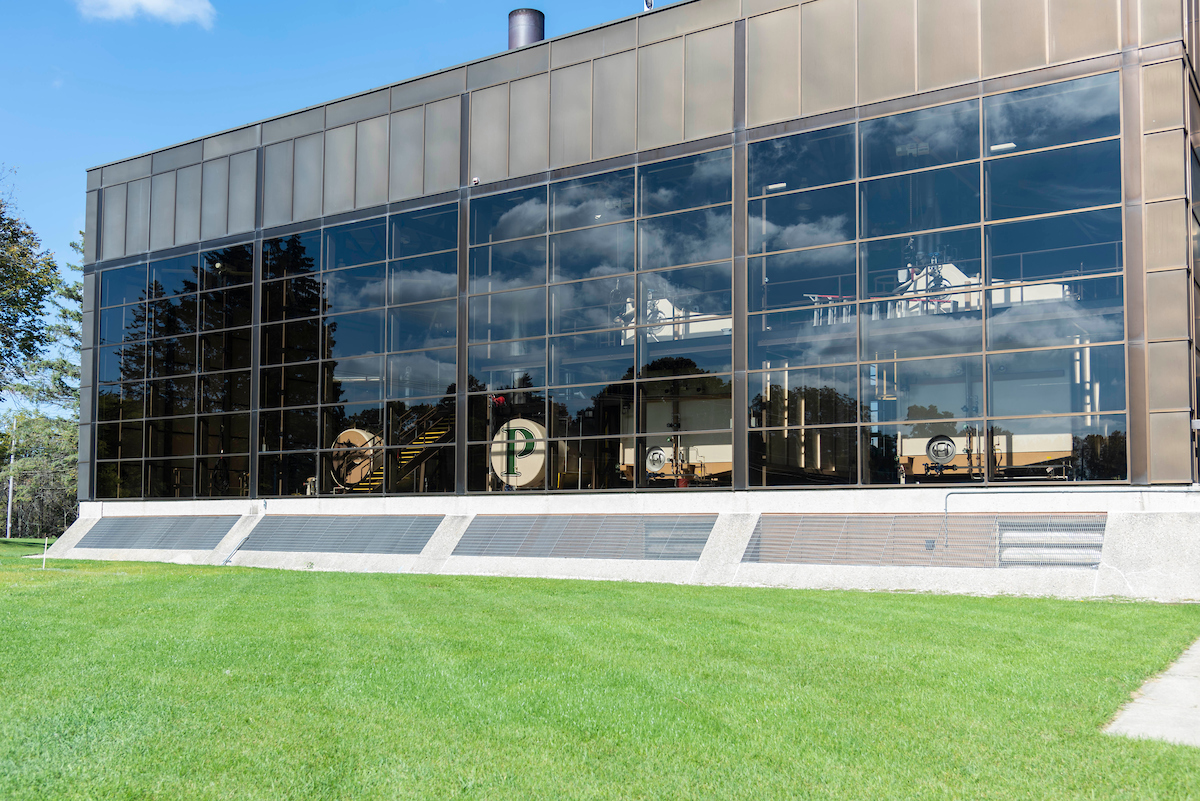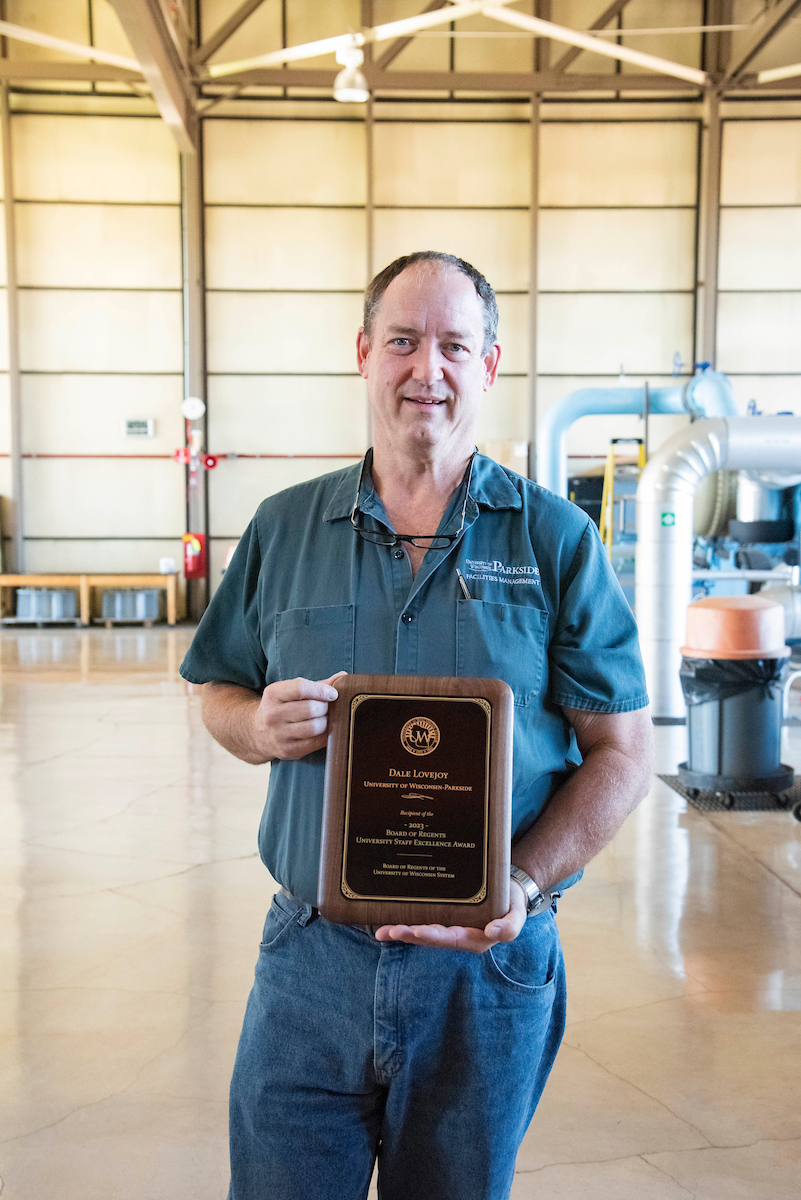Sustainability Spotlight: A Boilerside Chat with Dale Lovejoy, UW-Parkside’s Power Plant Superintendent, for Energy Awareness Month
 October is National Energy Awareness Month. During this month, Americans are encouraged to think about the importance of energy in our lives and how we can lead by example through improving energy efficiency and reducing energy waste. Understanding how energy generation systems function can also provide us with a better foundation for exploring energy alternatives.
October is National Energy Awareness Month. During this month, Americans are encouraged to think about the importance of energy in our lives and how we can lead by example through improving energy efficiency and reducing energy waste. Understanding how energy generation systems function can also provide us with a better foundation for exploring energy alternatives.
UW-Parkside Sustainability Coordinator Emily Reed sat down to talk about energy with Dale Lovejoy, the superintendent of UW-Parkside’s Heating and Chilling Plant. Dale began working at UW-Parkside in 1994 and currently oversees the operation of building automation systems and the Heating and Chilling Plant to ensure a safe and comfortable learning environment for the campus. He was also recently awarded the University Staff Excellence Award by the University of Wisconsin System Board of Regents.
 Q: Can you give an overview of how UW-Parkside’s Heating and Chilling Plant works and how it differs from what might be used in people’s homes?
Q: Can you give an overview of how UW-Parkside’s Heating and Chilling Plant works and how it differs from what might be used in people’s homes?
DL: There are similarities and differences between the central heating and chilling plant here at UW-Parkside and the ‘heating and cooling plant’ in your home. A similarity is that we use a boiler to generate ‘heat’, much like the boiler or furnace in your home, to provide warmth. Another similarity is that we use a chiller to generate ‘cold’, much like the air conditioner in your home, to provide cooling and dehumidification.
The differences are primarily the scale at which we perform these functions. The boiler or furnace in your home is rated in “BTUs/Hour”, a measure of the energy input rating. An average boiler or furnace in your home might be rated at 80,000 BTUs/Hour. The largest boiler at the heating and chilling plant is rated at 76,000,000 BTUs/Hour. The air conditioner in your home is rated in “Tons” of cooling, also a measure of the energy input rating. An average air conditioner in your home might be rated at 2 Tons. Chillers at the heating and chilling plant are also rated in “Tons”. The largest chiller at the heating and chilling plant is rated at 1,200 Tons.
By centralizing the operations of the heating and chilling plant, we efficiently operate and maintain these large pieces of equipment in one location. Also, because these pieces of equipment are located at a somewhat remote location, premium square footage of campus instructional space that would be required to locate this equipment in the buildings is minimized, and maintenance operations do not interfere with instruction.
 Q: Our facility uses natural gas to power the system. What are considerations to make when deciding what fuel source to use for heating and cooling?
Q: Our facility uses natural gas to power the system. What are considerations to make when deciding what fuel source to use for heating and cooling?
DL: One comparison is cost. Our current natural gas cost is $3.25/MMBTU. If we were to run our boilers off of fuel oil, it would cost $15.18/MMBTU. For electricity, it would cost $36.15/MMBTU. Environmental considerations are much too complex and detailed to be briefly discussed. However, for existing systems, the biggest environmental impact that can be made is to maintain the systems to manufacturer’s specifications – in other words, ‘make it run as the manufacturer intends it to’.
When considering whether switching an appliance from gas to electric might reduce carbon dioxide emissions, look into what mix of fuel generates your electricity. If the electrical grid fuel mix has a relatively high percentage of coal and natural gas, then focusing on reducing overall energy use through weatherization or lighting improvements might be a better use of effort in the near-term than converting a gas boiler to electric resistance heat, for example. All these factors should be calculated into long-term energy planning.
Q: UW-Parkside’s gas-powered boilers are very efficient. What improves efficiency in a heating system?
DL: Numerous factors contribute to the efficiency of the boilers and of the heating and chilling plant overall:
- Boilers, and all plant equipment, are specified and selected based on efficiency, ease of maintenance, sizing, form factor, best practices, industry standards, adherence to statutory codes and regulations, life-cycle costing, and experiential factors.
- Boilers, and all plant equipment, are operated and maintained by licensed and highly trained operations staff
- Economizers, and other waste-heat recovery methods, are utilized
Q: Are there energy-related projects that are a good showcase of how energy efficiency doesn’t have to sacrifice comfort?
DL: We have seen LED lighting retrofits that have produced very pleasing results. As with any project, the key is the detailed planning and engineering that precedes the implementation.
Water heater efficiency standards keep increasing, and our campus has been replacing outdated machinery with more-efficient equipment. Campus has also made changes in switching to low-flow appliances and faucets that still provide intended performance.
Our campus also has implemented building automation strategies for all sorts of process control, including HVAC (heating, ventilation, and air conditioning), lighting and water heating that can increase energy efficiency better than making manual adjustments.
Q: What are some ways students and staff at UW-Parkside can help optimize energy use on campus?
DL: My top recommendations I like to remind people of:
- Turn off lights when exiting a room
- Minimize lighting needs by using task-specific lighting instead of generally lighting an entire room
- Inform staff if the heating and cooling system in your room isn’t performing correctly
- If your room is overly warm in the winter, or overly cool in the summer, don’t open windows to ‘correct’ the problem – report it
- Don’t ‘prop open’ a building entry door – this wastes energy from the building’s conditioned space
- Use of space heaters should be completely avoided – they are huge energy wasters, and also are a safety risk
- Consolidate refrigeration units used for foodstuff – individual dorm-style refrigerators are energy wasters
Q: What are some recommendations on how to improve energy efficiency in homes?
DL: A professional can perform a home energy assessment and help you determine the projects that can save the most energy and money over the long run. Periodic and routine furnace, air conditioning and water heater tune-ups and maintenance are important to keep equipment running efficiently and reduce the chances of costly repairs. When considering whether repair or replacement of home appliances is warranted, normal energy use, routine maintenance that avoids replacement and resultant manufacturing processes should factored into overall decision making.
Thank you, Dale for your time and congratulations on the Staff Excellence Award. It is well deserved!